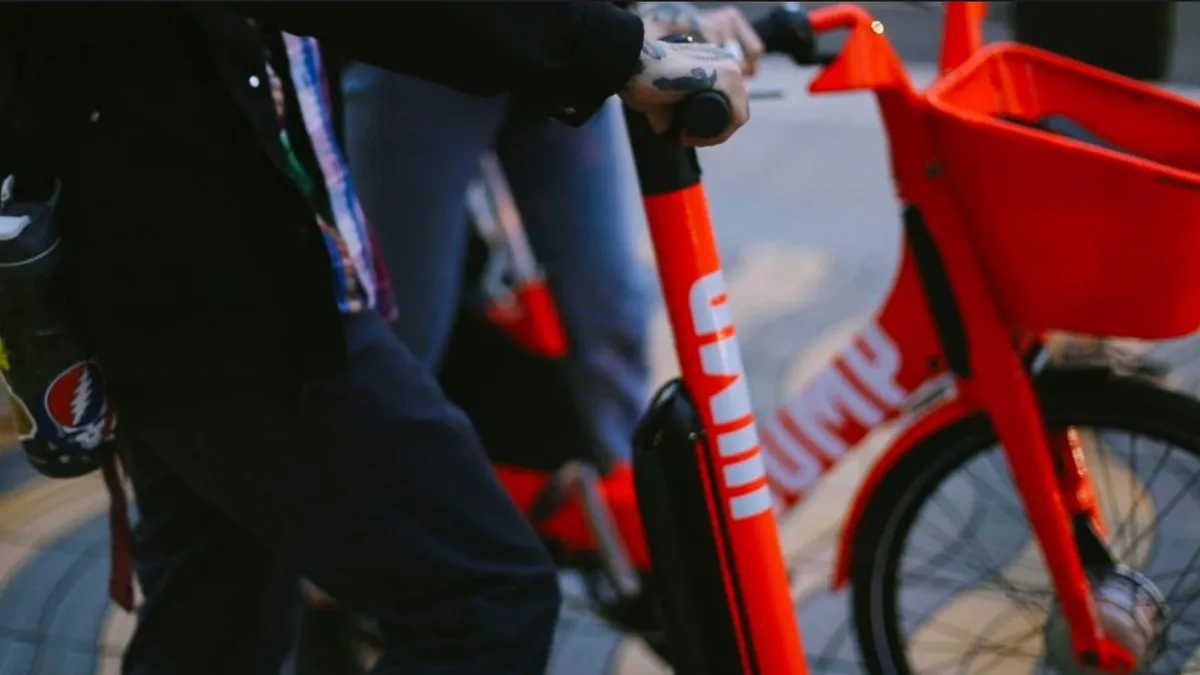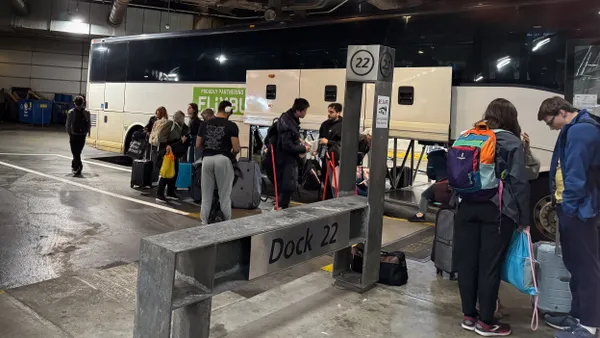Dive Brief:
- Uber on Wednesday unveiled its first fleet of Jump scooters in Santa Monica, CA.
- Riders can use Uber's app to rent a scooter for $1, plus 15 cents per minute. An Uber blog post details how riders can use the scooters, and that the scooters should be parked in a designated zone — shown in the app — when the ride is over. The Verge reports that if riders don't park in the designated zone, they could face a $25 fine.
- "As we work towards having your phone replace your car, we’re thinking about all the possible times you’d hop in the car and go, and what smart, equally as convenient option we could offer to get you there instead," Rhea Dookeran, Scooter Product Manager, wrote in the post.
Dive Insight:
Just last week, Uber CEO Dara Khosrowshahi detailed a series of announcements regarding the company's commitment to urban sustainability and service. He said the company would commit $10 million over the next three years to develop and execute ideas that advance shared mobility. Khosrowshahi touted the Shared Mobility Principles for Livable Cities, which encourages companies to "prioritize people over vehicles" and "lead the transition toward a zero-emissions future."
With the launch of this newest scooter fleet, Uber will cash in on these commitments while gaining a greater footing in the competitive shared mobility market. Uber has recognized the growing culture shift toward eco-friendly mobility, and although the company makes less revenue on bike and scooter rides than its traditional ride-hailing service, it is building a more sustainable business with this new, in-demand service offering.
This scooter launch also further levels the playing field between Uber and its top rival, Lyft, which launched its own fleets of scooters in Santa Monica and Denver in September. Santa Monica is now home to a pilot program of the country's leading dockless vehicle operators, also including Bird and Lime.
The success of both Uber and Lyft's scooter business in Santa Monica will be key to watch in gauging how quickly it could expand to other cities. Both companies have shared goals of becoming one-stop shops for all shared mobility needs, and although efforts have so far been a success, balancing all core services — while advocating for less personal vehicle use — will be a growing challenge for both companies.












